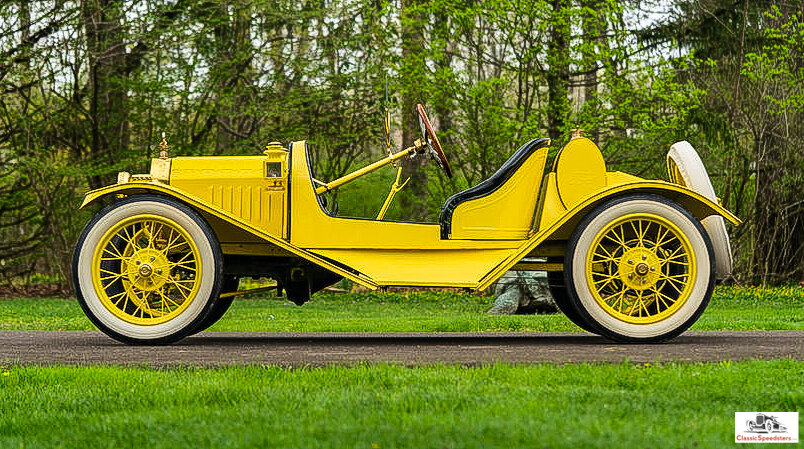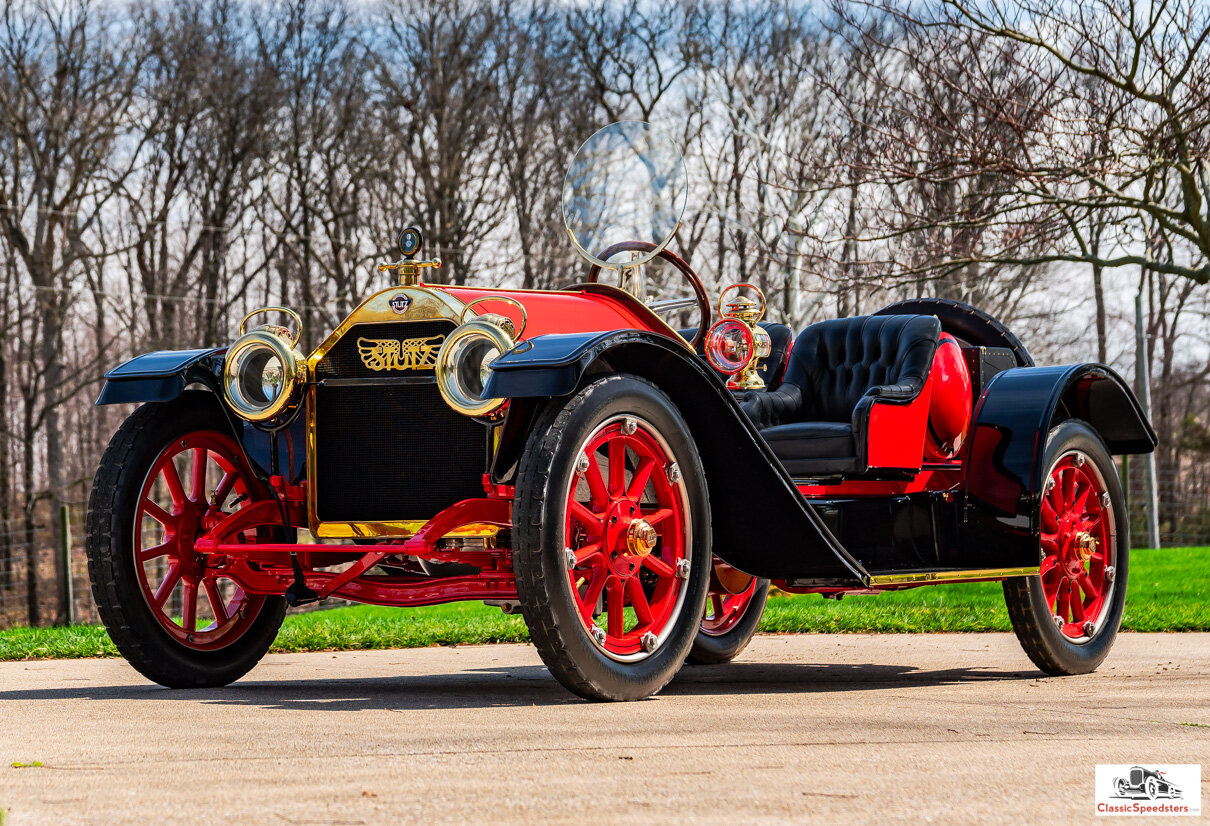In-Person Automobile Auctions Resume, May 2021
Renowned public auctions had to retool after March of 2020, as Amelia Island became the last publicly-attended concours event held in the United States before the COVID-19 pandemic shut everything down. Quickly adapting, concours events “went virtual” and auction houses had to shelve their live-auctions and retool. Online auctions like Bring a Trailer were already in the catbird seat while Gooding, Sotheby’s, Mecum, and many others had to scramble and expand their digital platforms.
But the big guys figured it out; most every company adapted and survived. Meanwhile, many auctions are now showing record prices and sell-through percentages. Amelia 2021 opened to renewed crowds of interested fans and car buyers. The auction that accompanied the Amelia Concours was hosted by Bonhams—an excellent event—another good sign for the collector world!
A bevy of speedsters sold in this auction, and many of the prices achieved indicate that buyers were willing to pay up for high-quality collectible cars. Let’s look at some of the examples…
Lot 153 1906 Stanley 30hp Vanderbilt
Designed to compete in the 1906 Vanderbilt Cup race (but not completed in time), this Stanley Steamer Vanderbilt was a perfect example of a purpose-built speed car.
1906 Stanley 30HP Vanderbilt Racer image courtesy Bonhams
Steam-driven automobiles during this period were not thought of as experimental as we would consider them today; trains were steam-driven, boats were steam-propelled, and there were steam-powered dirigibles too in the late 1800s. Aw, heck—remember the 1939 book Mike Mulligan and his Steam Shovel? Steam was a proven power source for many applications in the late 1800s and throughout much of the 1900s. Steam power was even marketed for automobiles, until the electric starter for gas-powered vehicles (1912) put the kibosh on serious competition (in auto sales) from steam power. By 1930, steam power for autos was kaput!
Nevertheless, early steam-powered vehicles are revered in the automobile world by collectors and fans alike; simply put, they are fascinating artifacts. Everything about this recreated Stanley Vanderbilt speaks of purposeful speed; the attention to detail on the car, as seen in this rear quarter photo, is also very impressive . Even the knobs controlling the steam have remarkable period detail.
Left rear quarter view of the 1906 Stanley Vanderbilt Racer. image courtesy Bonhams
The control knobs have a very Edwardian style to them! image courtesy Bonhams
Although the Stanley Vanderbilt did not compete at the Vanderbilt that year, a race event in Long Island best known for having to shut down in 1906 after 17 laps due to crowds of over 100,000 mobbing the course, the Stanley Vanderbilt did make its mark in hillclimbs up and down the east coast of the U.S.
Stanley would produce and market a street-oriented Gentleman’s Speedster from 1906-1908, probably an offshoot of this purpose-built racer. Bonhams estimated the price range for the Vanderbilt Speedster to be $225,000-$275,000. Unfortunately, bidding ran out of steam—it did not sell at this auction.
Lot 134 1908 Simplex Speed Car
The Simplex Automobile Company was formed by textile manufacturer Herman Broesel, Sr, a client of Smith & Mabley, who had been importing and manufacturing cars since 1903 and selling them at their New York City showroom. The Panic of 1907 wiped S&M Simplex out, and after Broesel purchased and recapitalized the company, he renamed it to be Simplex.
1908 Simplex 50hp Speedcar. image courtesy Bonhams
The1908 Simplex Speed Car offered at Amelia 2021 was from this earlier period of the company, as Simplex would again change hands after Broesel died in 1912. But that’s another story…
1908 Simplex Speedcar side view. image courtesy Bonhams
The Simplex Model 50 Speed Car was a classic cutdown speedster and one of five models produced by Simplex for 1909. All were built to high standards and priced in the $5000 range, which placed them in the luxury car category.
The Speed Car was built on a 124-inch chassis and powered by a T-head four cylinder engine designed by Edward Franquist. Displacing 597 cubic inches, it had an A.L.A.M.-rated 50 horsepower, and yes—it had plenty of go-go-go!
Simplex Speedcar T-head engine. The photo belies the size of the engine—600 cubic inches! Bonhams
A race-prepared Simplex would compete at the inaugural Indianapolis 500 Sweepstakes race and place sixth, driven by the famous Ralph dePalma. The Speed Car was one serious motor scooter!
Bonham’s estimated the 1908 Simplex to bring $600,000-$800,000, and the auction did not disappoint, rapping a gaveled price of $610,000.
Simplex Speedcar nameplate. image courtesy Bonhams
Lot 135 1909 Knox Model R Raceabout
Knox was one of a very few car companies that produced a competitive racer during the first decade of the 20th century. Unfortunately, the automotive arm of the firm did not last beyond 1914, but during its time, mighty speedsters designed for track and road events issued forth from its factory in Springfield, Massachusetts to compete—and conquer.
1909 Knox Model R Raceabout. image courtesy Bonhams
Several famous and successful racers depended on Knox cars to bring them to victory, including Fred Belcher, Barney Oldfield, and Joan Cuneo.
Barney Oldfield- Atlanta. This is possibly a 1909 Knox Model O six-cylinder or a 1910 S. image courtesy Richard Burnham collection
The 40-hp Model R Raceabout was the most junior of the three Knox Raceabouts sold during 1908-1911, but it was nothing to sniff at if one went up against a Model R.
1910 Knox Racers—available for anyone daredevil enough to buy one! editor collection
William “Billy” Bourque drove a Model R with his mechanician Harry Holcomb at the 1909 Indianapolis race event that unfortunately ended with seven deaths during that race weekend. Bourque and Holcomb were among those who lost their lives due to poor track conditions and other happenstance.
1908 Model R Knox Bourque-Holcomb. image courtesy Jack Hess collection
Bonham’s estimated the Knox Model R Raceabout to sell for between $80,000-$120,000, but the bidders knew that this was a special and rare car; the Raceabout gaveled at a handsome $142,000 all in!
1909 Knox Model R side view. image courtesy Bonhams
Lot 210 1911 Ford Model T Speedster
1911 Ford Model T Speedster front quarter. image courtesy Bonhams
To set the record straight, Ford Motor never built a named speedster model for production. Instead, a thousand like-minded tinkerers took it upon themselves to sweat in back yards and under shade trees on used, discarded, and often beat up Ford Model Ts. This first generation of American hotrodders from the first decade of the twentieth century were trying to make a go-fast flivver to “raise Cain” on some dirty back-country road. What they were emulating was what track racers did at the “outlaw” county fairs in early 20th century America—those track stars drove like crazy. And these go-fast Fordists were having every bit of fun doing imitating them too!
County Fair Race. image courtesy Jack Deo, Superior View Photo
One of the most popular modifications to perform was to simply strip the Model T body off of the chassis and build back a rudimentary cutdown model, with an engine cowling, two seats, and a gasoline tank. That was all there was to it!
Model T Speedster. image courtesy Antique Automobile magazine
Within a few years, more refinements evolved— modified chassis to lower the speedster—ready-made sport bodies to jazz up its looks—go-fast speed parts from many different speed parts sources as listed in the Ford Supplement, Western Auto, and other catalogs. Hundreds of sources, thousands of parts—this was the beginning of the speed parts industry in the U.S.
National Auto Ford catalog 1920. image courtesy AACA library
This very nicely detailed 1911 Model T Speedster at the Bonham’s Amelia auction sold for under its estimated $25,000-$35,000. However, it changed hands at a price that these cars often bring; its new owner paid $21, 280 all in, a fair price for a Ford Model T Speedster in cutdown style.
Model T Speedster side view. image courtesy Bonhams
Lot 139 1912 Stutz Bearcat
Harry C. Stutz produced a race car for the initial Indianapolis 500 Sweepstakes that was held in 1911. It’s been written in many accounts that Harry built the car and drove it to the track for the race, with his driver, Gil Anderson, finishing in 11th place after pitting 11 times for tires. Harry Stutz then decided to market the car for his Ideal Motor Car Company, giving it the slogan “The Car that Made Good in a Day.”
1913 Stutz Bear-cat as seen in its 1912-13 catalog; note the hyphenated spelling of the name, which would become a compound word by 1916. “Bearcat” is now the accepted spelling for all years. image courtesy AACA library
Where the name “Bearcat” came from is anyone’s guess, and to describe such a mythological being is a bit difficult, as it doesn’t exist—but as everyone knows, it stands for one tough creature!
1912 Stutz Bearcat. image courtesy Bonhams
Stutz initially spelled its name with a hyphen, but by 1916 this car had so defined the age of cutdown speedsters that its name merited a compound word sans hyphen. Stutz would produce a model of Bearcat or equivalent Stutz Speedster during most of its company history, up until the time that it stopped producing automobiles in 1934.
1912 Stutz Bearcat side view. image courtesy Bonhams
Bonham’s estimated price of its 1912 Bearcat was between $650,000-$850,000; the car sold at $643,00, a result that was in line with its prestige and historical value.
1912 Stutz Bearcat grill. image courtesy Bonhams
****************************************
Many thanks to Bonhams, which graciously granted permission for use of their catalog images in this post. And thanks also to Lynnie Farrant in their London press office, who provided auction photos.
Incidentally, if you are interested in reading more about the histories of some of the speedster models presented here, my upcoming book—Classic Speedsters—tells the story of these spectacular beasts. Stay tuned for news on its publication, scheduled for later this year.
In our next episode, we’ll look at some more of the speedsters that sold at the Bonham’s Amelia 2021 auction. These examples will include models from the 1920s and 1930s—the age of sport-bodied and luxo speedsters.
Until then, enjoy the good weather in your speedster!






















